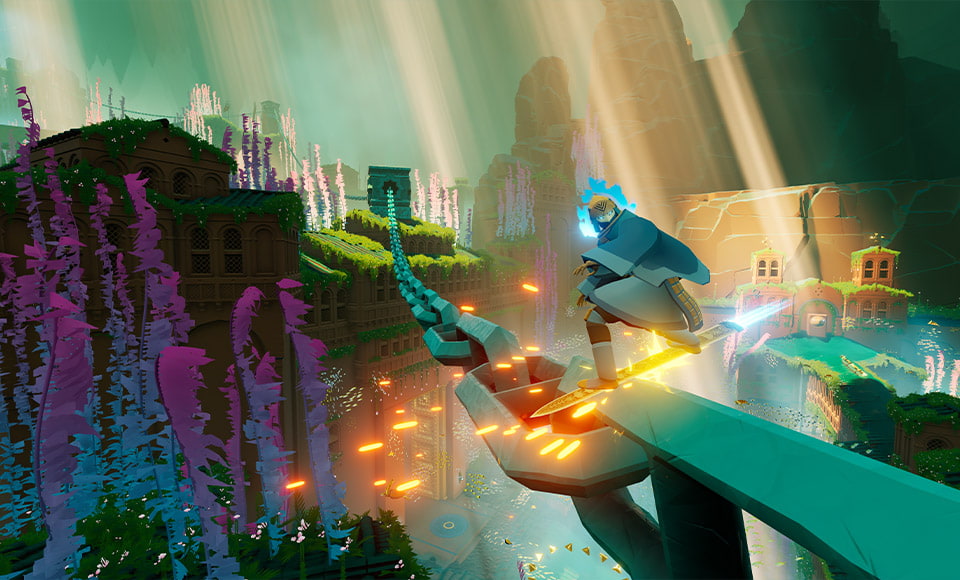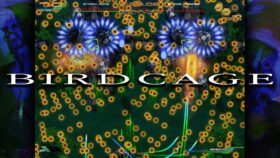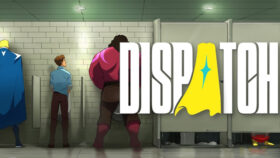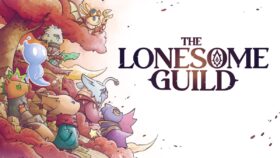Sword of the Sea Review
Here’s the truth: I play games for the story. I’m the kind of player who will read every lore book and exhaust every dialogue option. For me, a game’s mechanics are the vehicle, but the narrative is the destination. So, when a game from Giant Squid comes along—the studio from the art director of Journey—I know what to expect. Breathtaking visuals, a moving score, and a story that’s more felt than told.
Going into this Sword of the Sea review, I knew the plot wouldn’t be handed to me on a silver platter. This was a personal challenge; could a game with gameplay this polished and an atmosphere this rich win me over, even without the dense narrative I usually crave? I was ready to see if pure, unadulterated fun could be enough.
Sword of the Sea Gameplay is Masterful
For the first couple of hours, the answer was a resounding “yes.”
The core of the game is the “Hoversword,” and it feels absolutely incredible to control. It’s a perfect blend of a snowboard, skateboard, and surfboard, making traversal an absolute joy. The controls are smooth, intuitive, and forgiving, designed not to punish you, but to make you feel graceful and powerful as you carve through sand dunes and launch into the air.
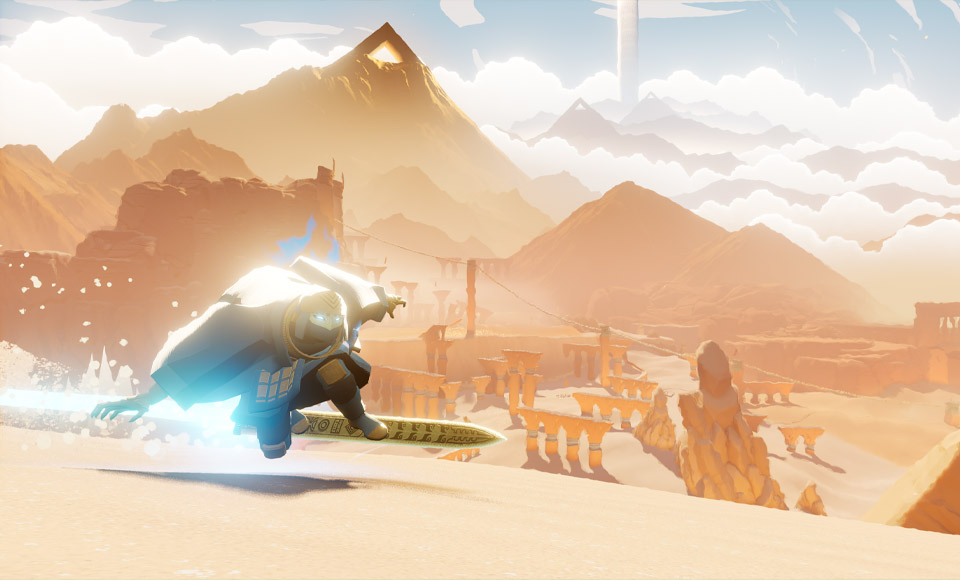
The entire experience is built to induce a “flow state,” where you’re just vibing with the movement in a way that’s both thrilling and deeply relaxing.
The main goal is to explore vast landscapes and activate ancient structures that bring water back to the dead world. When you do, the desert transforms into a vibrant ocean, opening up new, faster paths to ride.
Each restored area effectively becomes a gorgeous, imaginative skatepark. This gameplay loop is incredibly satisfying and proves that, on a mechanical level, this game is a triumph.
The Story is Exactly What I Expected
As expected, the story takes a backseat to the experience. The narrative is delivered wordlessly through the stunning visuals, Austin Wintory’s incredible score, and a few cryptic murals you find along the way.
There’s no dialogue or quest log; you’re meant to absorb the story through the atmosphere. For many, this is more than enough, but it can leave the world feeling beautiful but somewhat empty if you’re looking for something to grab onto.
As someone who eventually learned to appreciate just why Elden Ring sold nearly 30 million copies despite a hands-off narrative, I recognized the style. Both games treat the player like an archaeologist, expecting you to piece together the lore from environmental clues and item descriptions. You have to work to understand the world’s history.
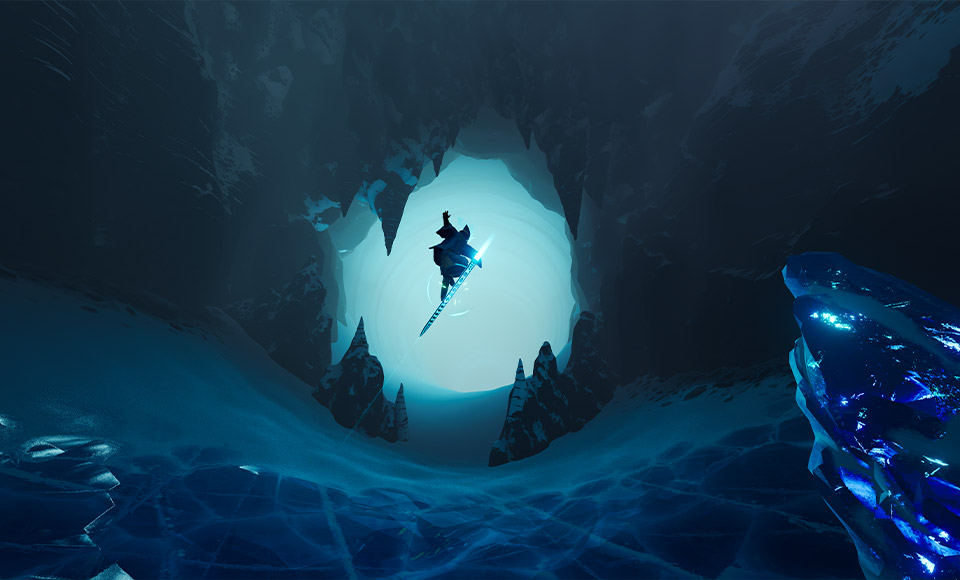
The crucial difference, however, is that Elden Ring‘s world is relentlessly hostile. Every piece of lore feels earned, a reward for overcoming a brutal challenge. That difficulty gives the story stakes.
Sword of the Sea, by contrast, is a deliberately “frictionless” and relaxing experience. There’s no real danger or punishment for failure. Because of this, uncovering a piece of the world’s history lacks the same impact. The very design that makes the gameplay so sublime also makes the story feel weightless.
The Ghost of ‘Journey’
It’s impossible not to compare this game to Journey, and doing so reveals what’s missing for me. The magic of Journey wasn’t just its beautiful world; it was the revolutionary anonymous multiplayer.
The story was about the silent bond you formed with a complete stranger as you helped each other survive the pilgrimage. Those shared moments of struggle and cooperation created a powerful, lasting emotional connection.
Sword of the Sea is a strictly single-player game. While the solitary journey is meditative and often awe-inspiring, it’s also a lonely one. Without that element of human connection, the entire emotional weight of the game rests on its gameplay and atmosphere.
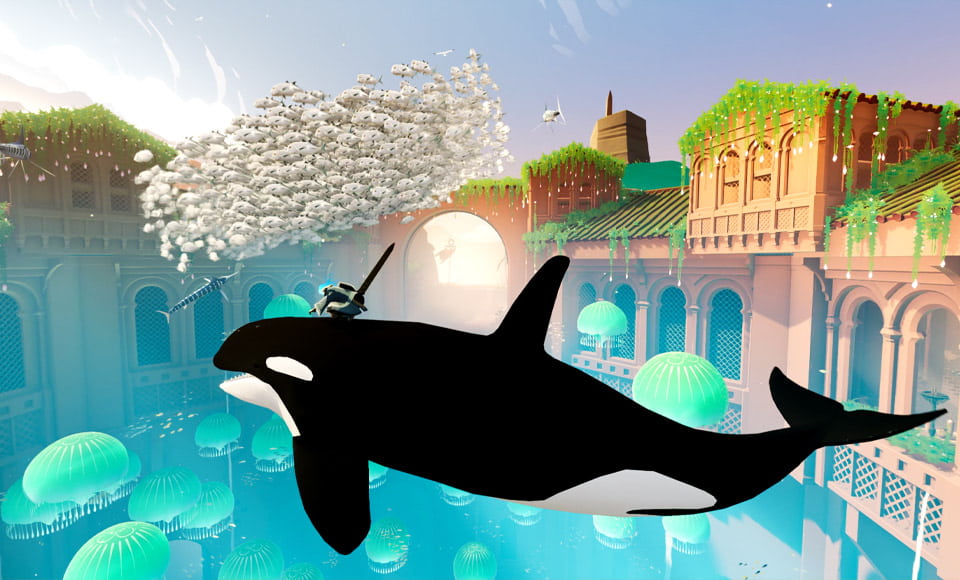
Final Verdict
So, did Sword of the Sea win me over? Yes and no. As a pure gameplay experience, it’s outstanding. The feeling of surfing across its vast, beautiful world is second to none. I deeply admire the artistry and polish on display.
But for a gamer like me, the experiment ultimately confirmed what I already suspected: I need a narrative anchor to truly fall in love with a game. Without it, the experience, while spectacular in the moment, feels transient. It’s like a beautiful dream that fades soon after waking. It was a worthwhile challenge and a stunning detour, but my search for the next great story continues.
Pros & Cons
| Pros | Cons |
| The Hoversword movement is incredibly fun and feels amazing. | The story is minimal and may not connect with players looking for a strong narrative. |
| The art style and music are breathtaking. | The game is very short (3-5 hours), which might not feel worth the full price. |
| The “flow state” gameplay is both relaxing and thrilling. | There’s very little challenge, and the puzzles are too simple. |
| Transforming the world from desert to ocean is visually spectacular. | Some players have reported performance issues and frame rate drops. |
